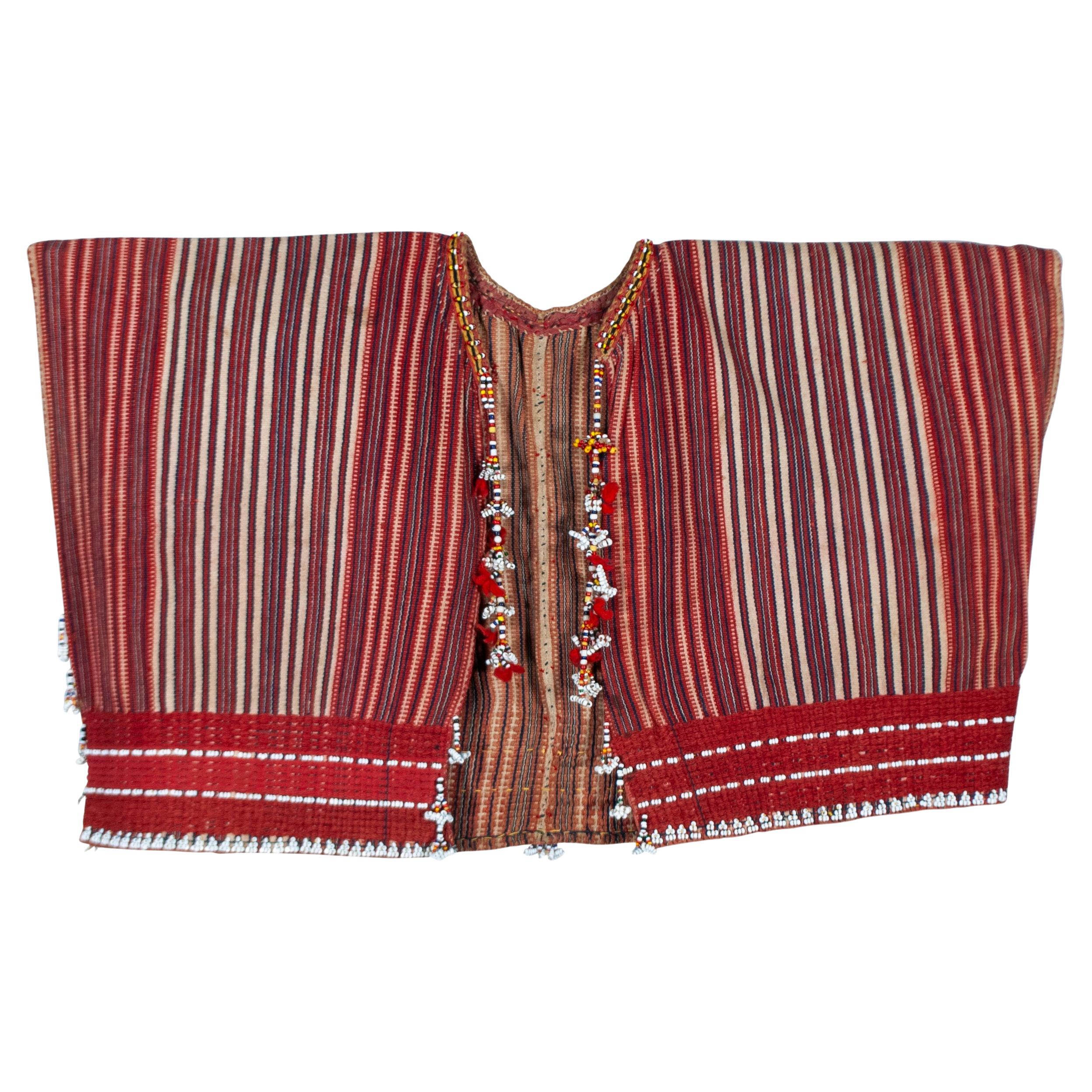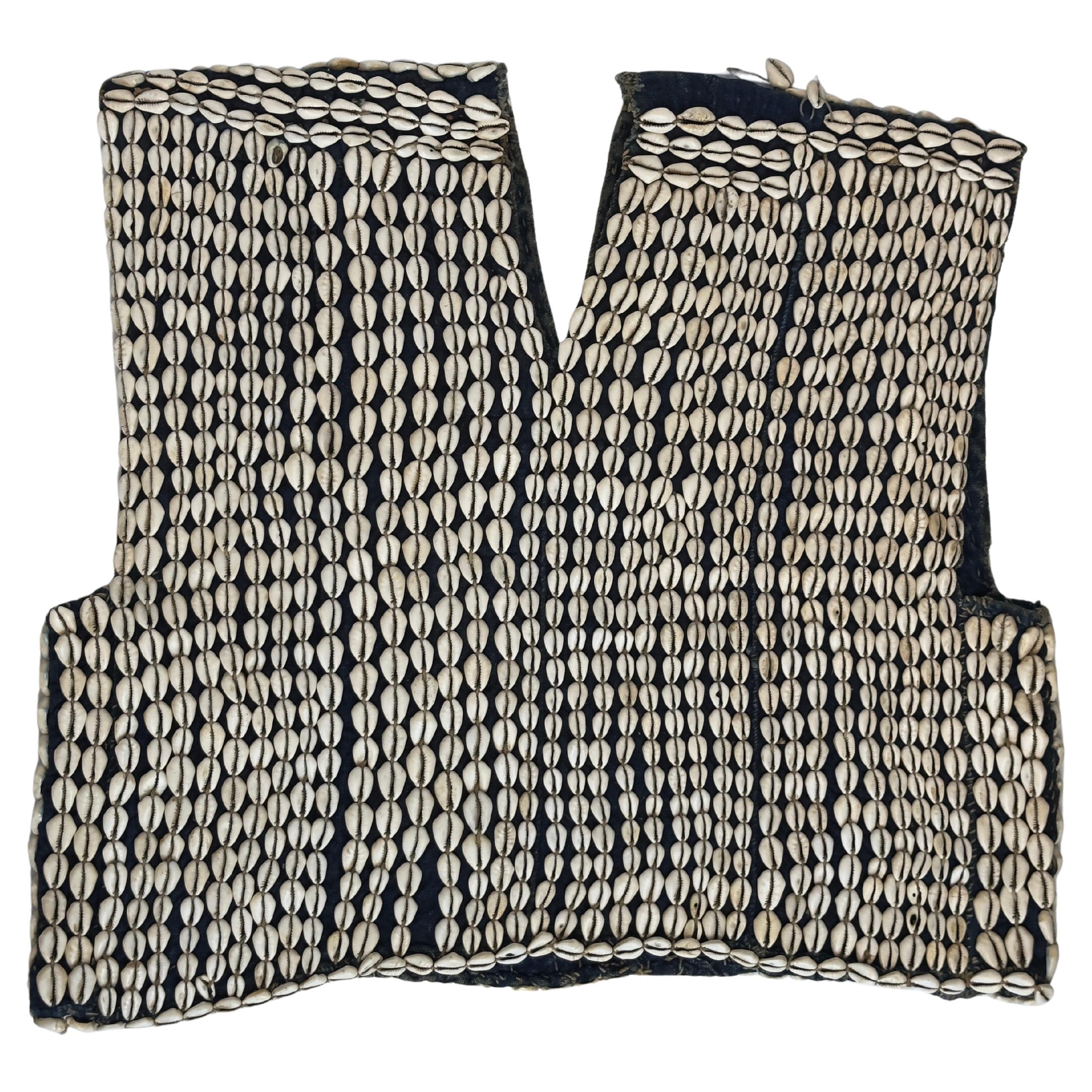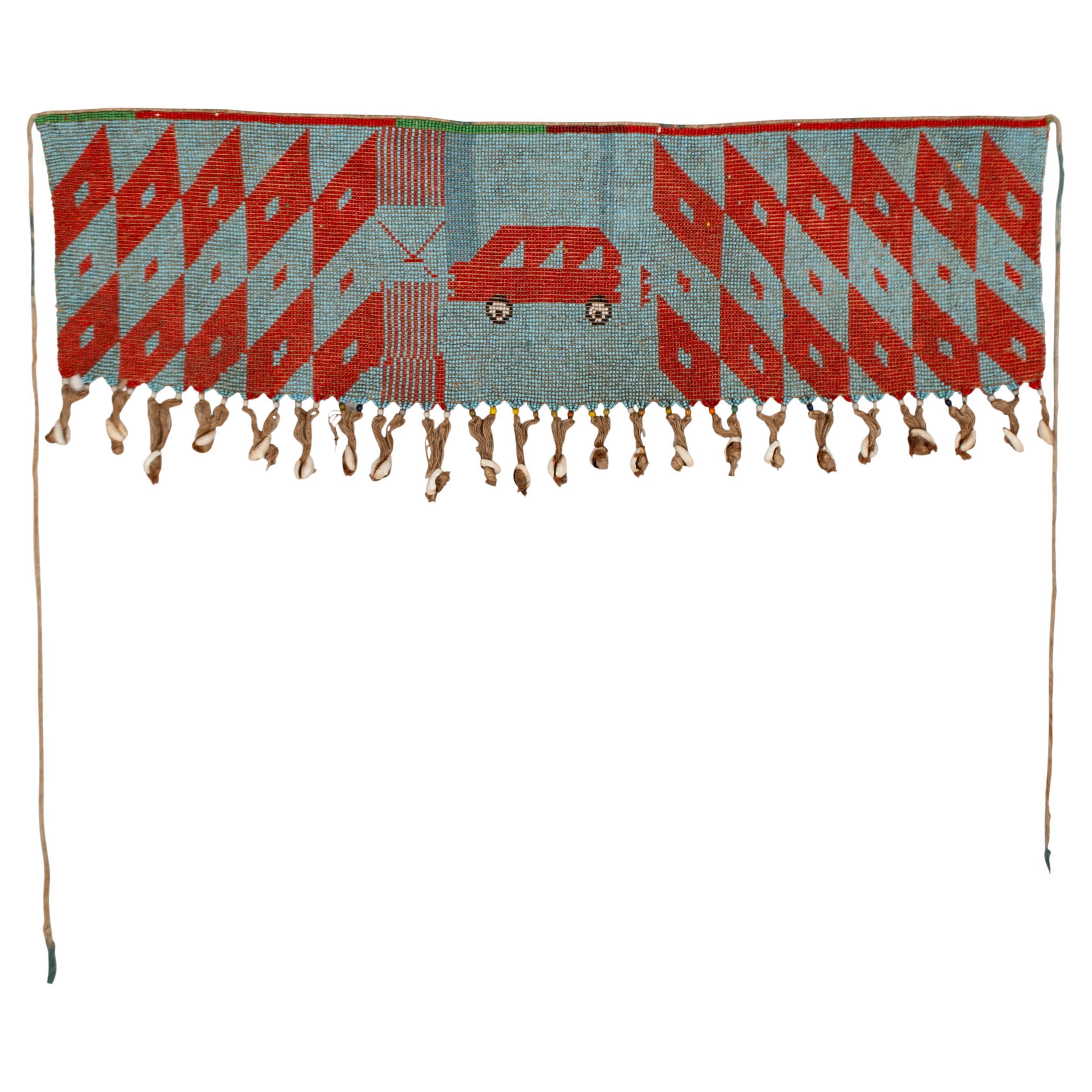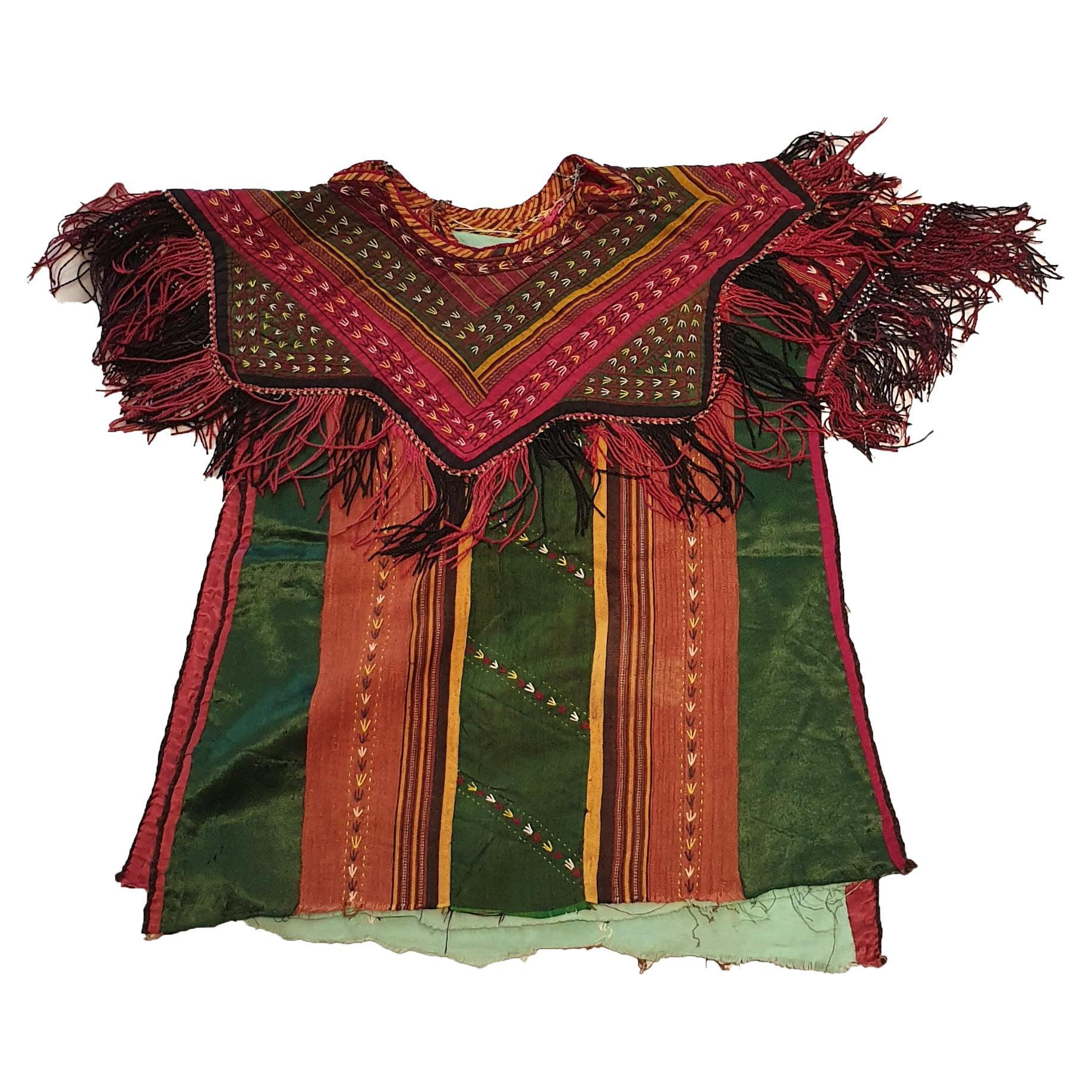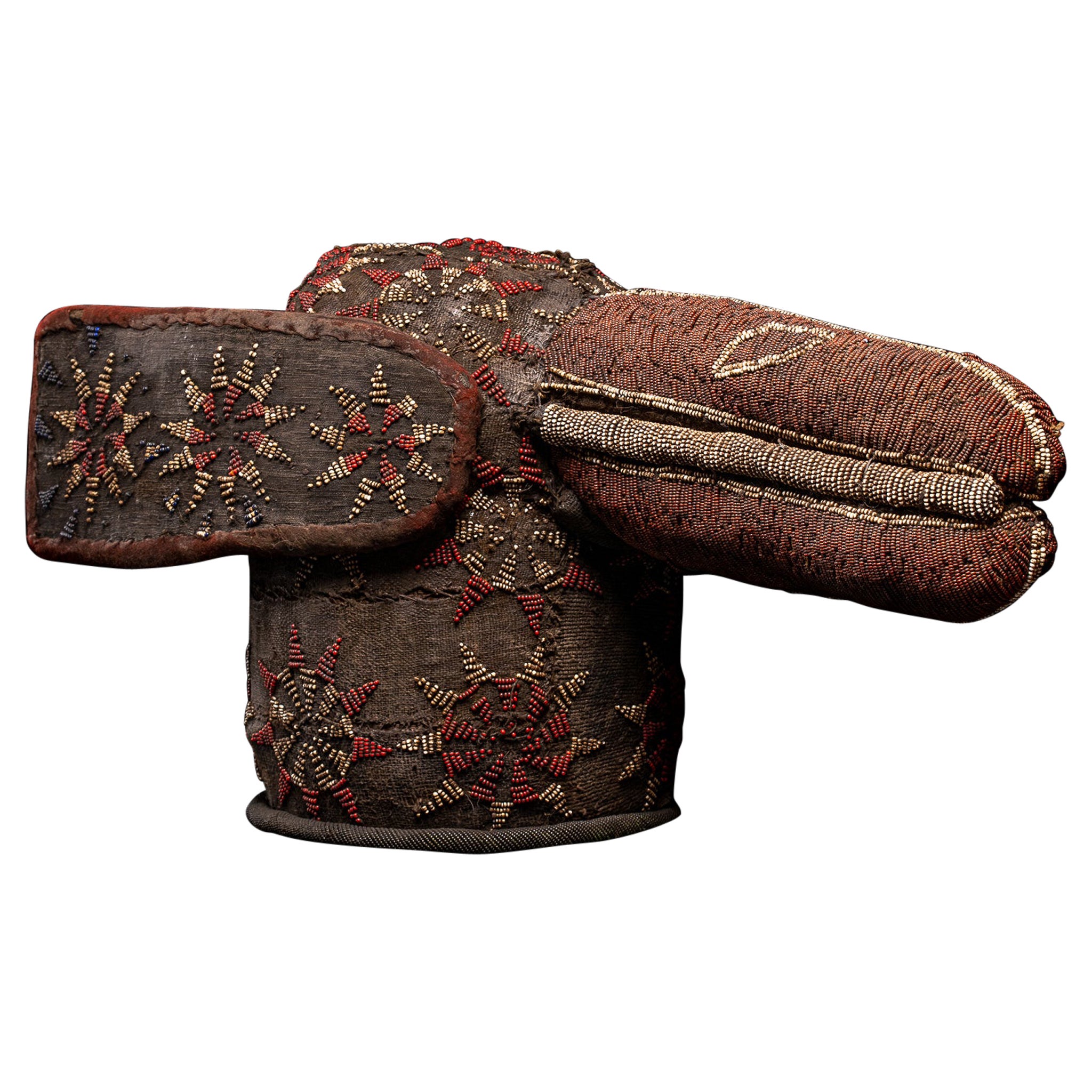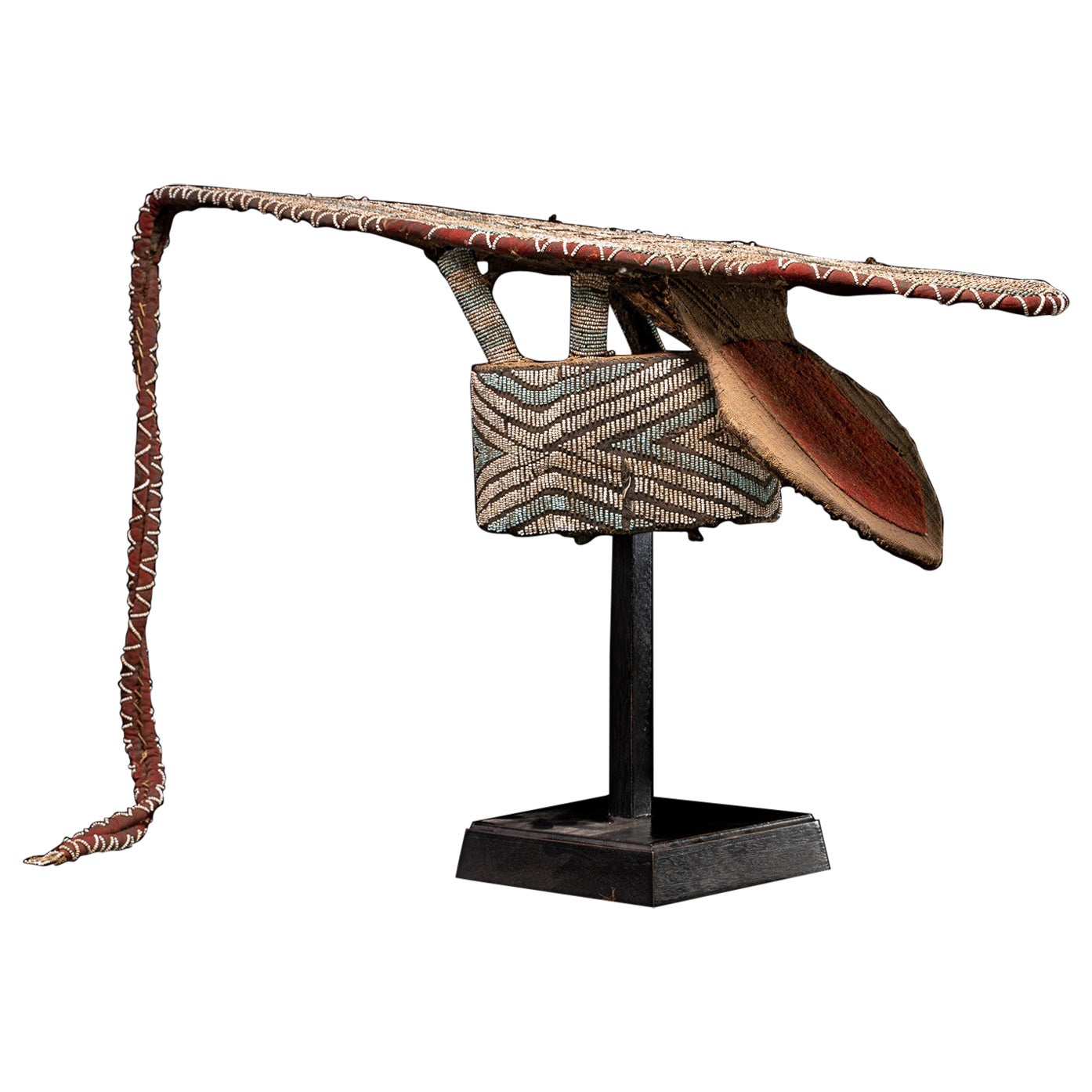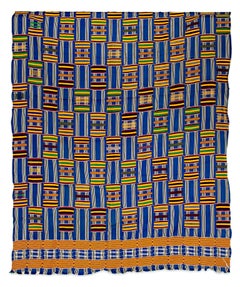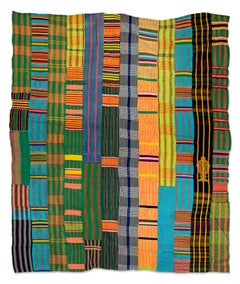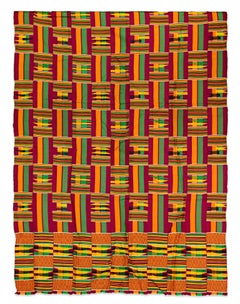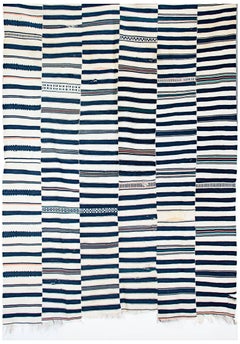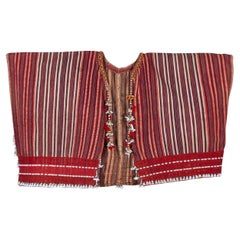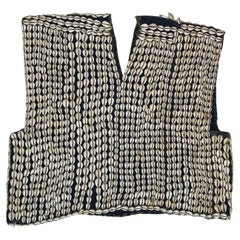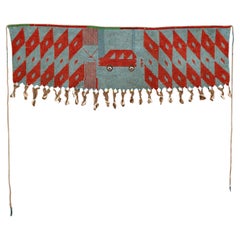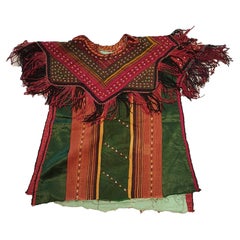Items Similar to "Ceremonial Hunting Shirt - Yoruba, Nigeria, " Glass Beads, Shells, & Cloth
Want more images or videos?
Request additional images or videos from the seller
1 of 7
Unknown"Ceremonial Hunting Shirt - Yoruba, Nigeria, " Glass Beads, Shells, & Clothcirca 1940
circa 1940
$6,100
£4,586.78
€5,303.73
CA$8,608.78
A$9,340.96
CHF 4,955.21
MX$114,706.30
NOK 61,279.82
SEK 58,031.92
DKK 39,590.16
About the Item
For the Yoruba people of Nigeria, beads and shells are applied to ceremonial garments and headdresses. Beads are an important part of Yoruba culture. henry John Drewal has written that a "number of key concepts--temperament, empowerment, protection, potentiality, desire, wealth, and well-being--are associated with beads." The vest, believed to be a ceremonial hunting vest, is decorated with birds, fish, snakes, and abstract triangular faces representing a deity. The snake is considered a messenger of the gods. The glass beads and shells are symbols of wealth and status; thus, Yoruba men wear beaded regalia. Cowrie shells are particularly significant; at one time they were used as currency. This is. garment made for those of royal and priestly lineage, typically worn for ceremonial occasions. Both kings and priests are believed to have contact with the gods and with nature, acting as intermediaries between the physical and supernatural worlds. According to the Art Institute of Chicago, beads contain ase (animating force) and become further imbued with it when worn.
There is evidence of bead manufacturing among the Yoruba that dates as far back as the 11th century AD. Scientific evidence exists indicating that blue-green glass beads were being traded outside the Yoruba area long before the era of contact with the Europeans. The Yoruba kingdoms of Benin and Ife were wealthy enough to generate a large trade with the outside world. One prized import was foreign beads, from India before 1500 and from Venice, Bohemia, and other parts of Europe. In the late 19th century, hereditary Ife carvers and crown makers began to fashion crowns and other regalia for Obas (kings) in a new style out of trade beads. Yoruba craftsmen at other courts followed suit and the fashion spread to the priesthood as well.
27 3/4" x 21"
- Creation Year:circa 1940
- Dimensions:Height: 27.75 in (70.49 cm)Width: 21 in (53.34 cm)
- Medium:
- Movement & Style:
- Period:
- Condition:
- Gallery Location:Milwaukee, WI
- Reference Number:Seller: 1713d1stDibs: LU605312805772
About the Seller
4.9
Platinum Seller
Premium sellers with a 4.7+ rating and 24-hour response times
Established in 1966
1stDibs seller since 2017
442 sales on 1stDibs
Typical response time: 3 hours
- ShippingRetrieving quote...Shipping from: Milwaukee, WI
- Return Policy
Authenticity Guarantee
In the unlikely event there’s an issue with an item’s authenticity, contact us within 1 year for a full refund. DetailsMoney-Back Guarantee
If your item is not as described, is damaged in transit, or does not arrive, contact us within 7 days for a full refund. Details24-Hour Cancellation
You have a 24-hour grace period in which to reconsider your purchase, with no questions asked.Vetted Professional Sellers
Our world-class sellers must adhere to strict standards for service and quality, maintaining the integrity of our listings.Price-Match Guarantee
If you find that a seller listed the same item for a lower price elsewhere, we’ll match it.Trusted Global Delivery
Our best-in-class carrier network provides specialized shipping options worldwide, including custom delivery.More From This Seller
View All"Fabric - Ashanti Tribal Cloth, " Silk Weaving from Africa circa 1930
Located in Milwaukee, WI
Among the most well-known West African textiles is kente cloth, woven by the Ewe and Asante peoples of Ghana. The word kente is not used by the Asante people; it may be derived from ...
Category
1930s Folk Art More Art
Materials
Silk
"Tribal Cloth, Ewe Ghana, " Multicolored Cotton Textile created circa 1965
Located in Milwaukee, WI
The Ewe people from Ghana are master weavers. People of means commission cloths called adanudo ("skilled/wise cloths"). Ewe adanudo textiles often display a tweed effect by twisting ...
Category
1960s Folk Art More Art
Materials
Cotton
"Kente Cloth Ashanti Tribe, Ghana, " Silk and Cotton Weaving created circa 1970
Located in Milwaukee, WI
This silk and cotton fabric was made by an unknown Ashanti artist. It features green and orange accents. The Ashanti are a major ethnic group of the Akans in Ghana, a fairly new nation, barely more than 50 years old. Ghana, previously the Gold Coast, was a British colony until 1957. It is now politically separated into four main parts. Ashanti is in the center and Kumasi is the capital.
The Ashanti have a wide variety of arts. Bark cloth was used for clothing before weaving was introduced. With weaving, there is cotton and silk. Women may pick cotton...
Category
1970s Folk Art More Art
Materials
Cotton, Silk
"Kente Cloth, Ashanti Tribe Ghana, " Cotton Weaving created circa 1970
Located in Milwaukee, WI
This cotton fabric was made by an unknown Ashanti artist. It is mostly black and white. The Ashanti are a major ethnic group of the Akans in Ghana, a fairly new nation, barely more than 50 years old. Ghana, previously the Gold Coast, was a British colony until 1957. It is now politically separated into four main parts. Ashanti is in the center and Kumasi is the capital.
The Ashanti have a wide variety of arts. Bark cloth was used for clothing before weaving was introduced. With weaving, there is cotton and silk. Women may pick cotton...
Category
1970s Folk Art More Art
Materials
Cotton
"Indonesian Golek Puppet (Male), " Handmade Carved, Painted Wood & Fabric c. 1900
Located in Milwaukee, WI
This Golek puppet was made by an unknown Indonesian artist using wood and cloth. It is approximately 24" tall.
Traditional Wayang Golek plays can be comp...
Category
Early 20th Century Folk Art Figurative Sculptures
Materials
Textile, Wood
"Senufo (Gbon) Statute of Royalty, " Wood, Ivory, & Cowry Shells created c. 1940
Located in Milwaukee, WI
"Senufo (Gbon) Statute of Royalty" is a sculpture by thr Senufo peoples of Gabon. It is wood, mixed fiber, textiles, and cowry shells.
14" x 8" x 3"
The...
Category
1940s Tribal Abstract Sculptures
Materials
Wood, Found Objects
You May Also Like
Antique Man’s Ceremonial Beaded Vest (Kuton), Gadding, Philippines
Located in Point Richmond, CA
Antique Man’s Ceremonial Beaded Vest (Kuton), Gadding, Philippines
This Gaddang man’s ceremonial vest is from the Cordillera region in northern Luzon, Philippines. It’s composed of ...
Category
Mid-20th Century Philippine Tribal Tribal Art
Materials
Cotton
A Bobo ceremonial top decorated with cowrie shells
Located in Amsterdam, NL
Bobo people, Burkina Faso/Mali, Early 20th century
The top, made in a vest-like form, consists of a base made out of cotton with an outer decorated layer of cowrie shells.
Provenan...
Category
Early 20th Century Burkinabe Tribal Art
Materials
Shell, Cotton
Antique Woman’s Ceremonial Beaded Cache-sexe (Pikuran), Cameroon
Located in Point Richmond, CA
Antique Woman’s Ceremonial Beaded Cache-sexe (Pikuran), Cameroon
Worn by the Bana Guilli (Kirdi) women of the Mandara Mountain region in northern Cameroon, pubic aprons, or cache-se...
Category
Mid-20th Century Cameroonian Tribal Tribal Art
Materials
Beads
809, Pair of African Clothes
Located in Paris, FR
pair of very decorative African clothing.
Category
Vintage 1950s Tunisian Tribal Decorative Art
Materials
Cotton
Bamileke Decorative Dance Crest, embroidered with European Glass Beads
Located in Leuven , BE
Bamileke Decorative Dance Crest, embroidered with European Glass Beads, Grasslands People, Cameroon.
Private collection Brussels
The raffia splint is covered with cloth and colou...
Category
Mid-20th Century Cameroonian Figurative Sculptures
Materials
Beads
Bamileke Decorative Dance Crest, embroidered with European Glass Beads
Located in Leuven , BE
Bamileke Decorative Dance Crest, embroidered with European Glass Beads, Grasslands People, Cameroon.
Private collection Brussels
The raffia splint is covered with cloth and colou...
Category
Mid-20th Century Cameroonian Figurative Sculptures
Materials
Beads
